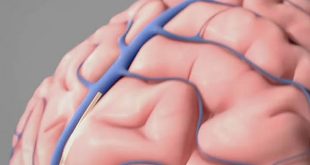CINEMA 4D R11 – Part 4: Architecture Edition is the fourth part of a multi-part review covering MAXTON's new CINEMA 4D Release 11's offerings. Because this product has so many items available for the user, I could not do it justice in a single review, so I will break it down in separate parts. This fourth one will cover the Architecture Edition, a special package that is intended for architectural renderings. (Note: you may need to update QuickTime before viewing the videos linked in this article, which you can do here)
As I said in my first installment, CINEMA 4D R11 is the latest release of the commercial cross platform, high-end 3D graphics application from MAXON. Because of it modularity, the core product gives you everything that you need to create high-end 3D images and animations. But when you need additional features, you can get those as well.
The Architecture Edition is focused on 3D rendering for the building design industry. It differs in that it is has many changes and presets that make creating architectural visualizations easier than ever. There are two ways to purchase this edition. The first is a standalone package that gives you all that you need to get going right away. This includes the core CINEMA 4D package introduced in part one of this series, then it also includes the Advanced Render module that I described in part two and the Sketch and Toon modules I talked about in part three. The second method is for those already own the Core module and want to add on the Architecture functionality. To use the Architecture Extension Kit, along with having the Core, you will also need the Advance Render and the Sketch and Toon modules which can be each purchased separately.
How is the Architecture Edition different than the standard version?
The Architecture Edition layout has been customized for the creation of architectural visualizations. It has predefined materials that are suited for the kind of work that would tie-in with buildings and structures. There are also many features like the Visual Walkthrough that make this system different from the Core package.
The first thing that is noticed is the fact that the layout is different. It has been streamlined for architectural visualizations. Not included are many of the commands for traditional CINEMA 4D implementation. If you need to go back to the standard view, it's there; you just have to change the layout from the menu system.
Next is the content browser that contains the Architecture library. This is a comprehensive system that contains specially created materials, objects, and animations scenes that are designed to help you create effective visualizations. These include:
• Materials – that can be used to affect the look of any texture. There are over 350 different predefined materials that include brick, concrete, glass, metal, and much, much more.
• Objects – that can be used in your visualizations. There are over 500 objects included from companies such as COR, Wilkahn, and more. These objects have been optimized for use in CINEMA 4D.
Other features of the Architecture Edition include:
• Virtual Walkthrough – lets you create an automated fly-around of your structure. Of course collision detection is available here as well. The Collision Orbit tool's collision detection feature keeps the camera from strafing the structure during its fly-around. The camera movement of either of these tools can be recorded as a path and later rendered as an animation. This is an ideal tool for the creation of realistic-looking animations.
• CAD Connectivity – gives you the ability to import your documents from your CAD environment directly into the C4D format. All defined structures and hierarchies will be supported, and materials applied in the CAD application will be recognized and displayed in CINEMA 4D. Subsequent changes to your model can also be easily transferred to CINEMA 4D.
• Cameras – include a shift camera that works like a camera with a shift lens, and the other is an orbit camera that moves along a circular path around an object.
• Animation – objects that let you create an animation that spans a single day and a second that spans a single year. In both cases, you set it and CINEMA 4D handles the details.
• Lighting – using direct or indirect lights that are based on real world observations. Which kind you want to use will depend on the situation, experience, preference, and ability.
As with the core product, this extension is just as easy to use. It comes with its own examples and a quick-start book that will walk you through a series of tutorials to help you get up to speed. If that is not enough, you also have available training at MAXON's Cineversity. This is a subscription-based training service that will make it easy to get going quickly.
You can download a demo, or purchase the core or individual modules. There are even bundles available for a better deal. If you want to get into 3D then now is the time to check out CINEMA 4D Release 11. I highly recommend this product.
 Blogcritics The critical lens on today's culture & entertainment
Blogcritics The critical lens on today's culture & entertainment



